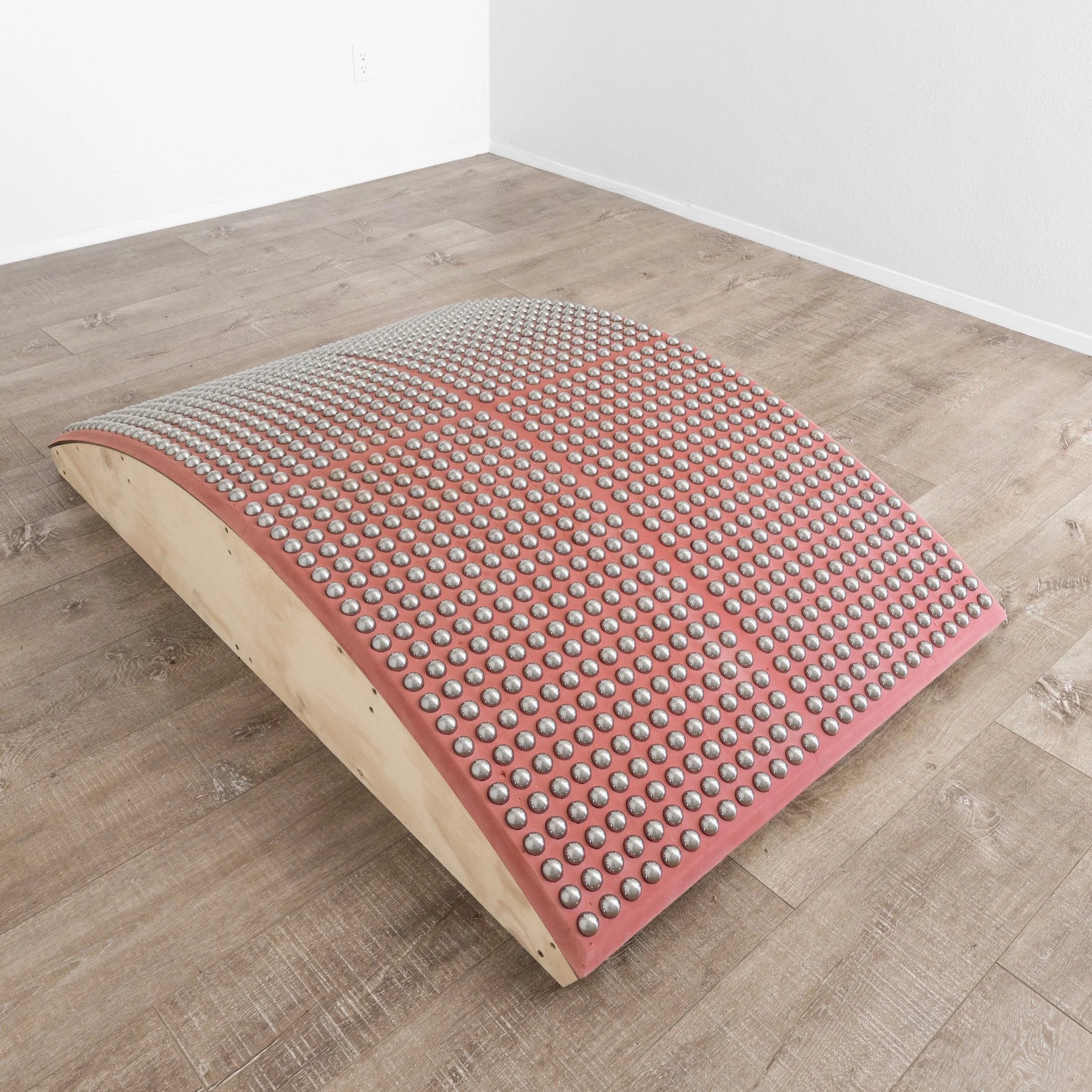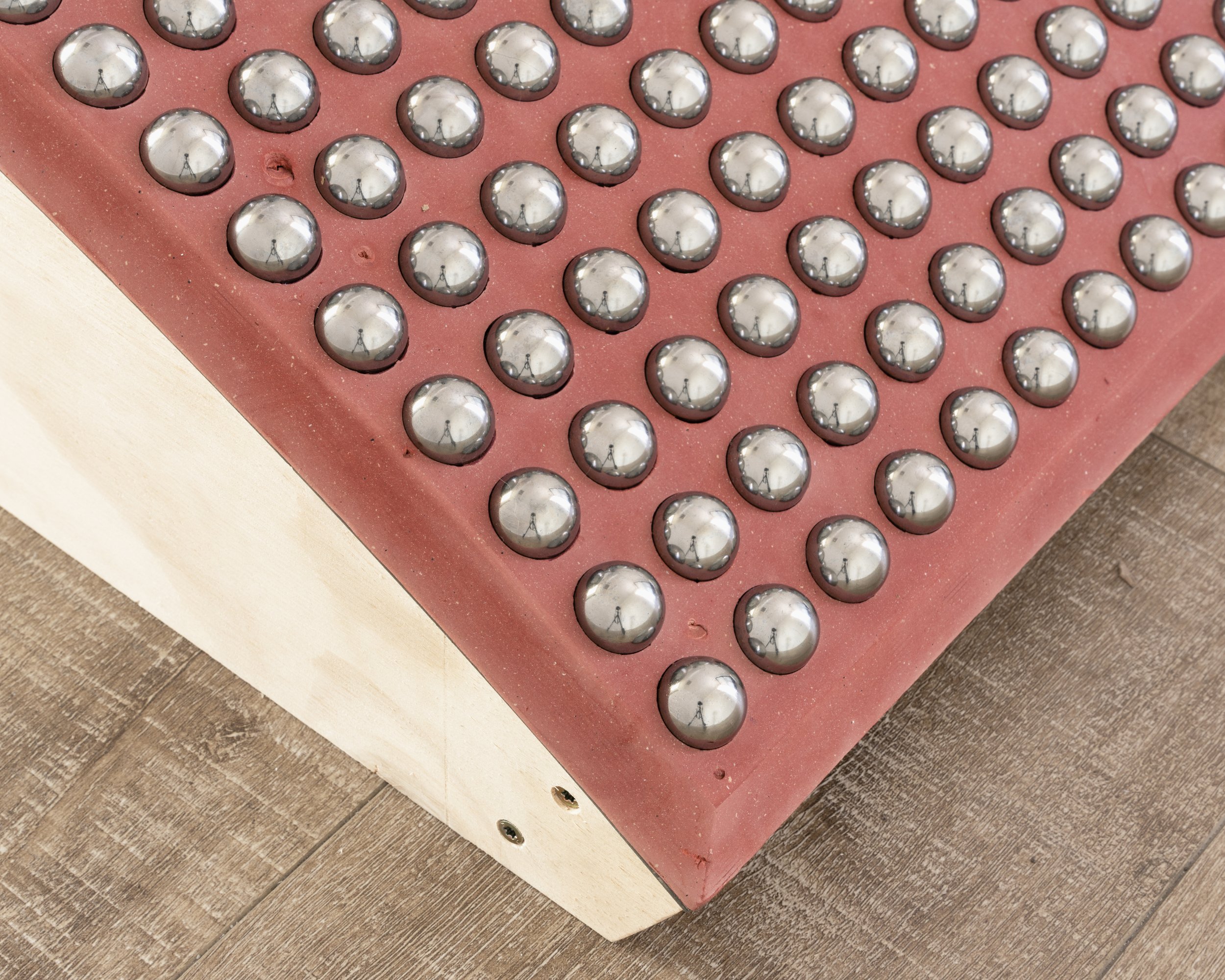Slow Dance
Max Lofano and Joshua Moreno
Curated by Jacqueline Marino and Lizzie Zelter
July 26 - August 30, 2024
Two Rooms is proud to present Slow Dance, a two-person exhibition featuring Max Lofano (b. 1995, San Jose, CA) and Joshua Moreno (b. 1988, Watsonville, CA). In this pairing, two artists who typically work in installation venture into different media. Slow Dance includes a sculpture by Lofano, a video by Moreno, and new drawings from both artists. Sensitive to the laws of gravity and motion, Lofano and Moreno each contend with impermanence and the limits of human innovation. Through interventions of assembling and accumulation, they reposition matter into rhythmic, cascading forms.
Lofano uses unplaceable, often factory-made materials, such as drywall tape, twine, or plastic cling wrap, considering their formal potential over extended periods of time. He works towards chemistry between the proportions, textures, and weight of these materials to build new forms that encompass his time experimenting in the studio.
Centrally stationed, Carrier is fixed in place and illuminated solely by the shifting levels of sun that pass through the entrance. Above a layered armature of wood and steel sit hundreds of mirrored spheres ensconced in rows of one-inch holes. As both individual spheres and as a collective wave, one sees their reflection and their surroundings warped and blurred, echoing and multiplying. In Carrier’s heavy stillness and infinite movement, Lofano unearths a unique presence hovering between the ordinary and poetic. The glowing analog surface tracks the movement of those in its periphery, while also absorbing frenetic imagery that overflows from Moreno’s video in the adjacent room.
Moreno’s practice explores the connective tissue between place and time, through gathering and repositioning ephemera native to a specific site. In his installation work, he builds delicate monochromatic constructions from collected detritus, such as scrap wood, rocks, styrofoam, and white flag markers. Tenderly assembled, his work recalls Rube Goldberg machines, playful contraptions that perform simple tasks in an overly complicated sequence of events.
Moreno’s film, Goes Around, engages with darker chain reactions, stitching together YouTube clips that reflect the intertwined nature of manmade and environmental spectacle. Throughout the 25-minute loop, one internet-culled video leads to another through associations of shape and content. There is footage of the 1986 Space Shuttle Challenger explosion, killing all seven crew members 73 seconds into flight due to engineering failures. Family members watch in horror, the lens zeroing in on their rapidly intensifying expressions as they realize what has just transpired. Entropic trajectories of bullets, runaway tires, and oil-rig explosions occupy the same airspace across different points in time. The sky contains most of the action, rendering humans, machines, fire, and dust as matter whirling through space.
Both artists produced graphite drawings for Slow Dance, responding directly to the scale and site of the five hallway windows. Moreno’s Slow Burn is a triptych of dense vertical columns, which increasingly disintegrate with each segment. Lofano’s drawings, Mash and Puff, are physical and intuitive. They hold a record of mark making, physicalizing the process of transferring movement and energy onto the thin plastic surface. Considered together, the drawings rest between presence and absence, forms that disperse and combust.
Lofano and Moreno have orbited around one another for some time, both geographically and creatively. They form part of a contemporary generation of California artists, permeated by the legacy of the Light & Space movement, and inescapably influenced by their 90s and early 2000’s upbringings. They came of age around Southern California based engineering and aerospace industries amidst an oversaturation of US militarization abroad. Carrier and Goes Around may be understood as testaments to this collective context where individuals are subject to cyclical external forces that are overly-accessible yet highly-inscrutable. Taken together, the works in Slow Dance appeal to the act of witnessingmovement within and around our impermanent surroundings.














